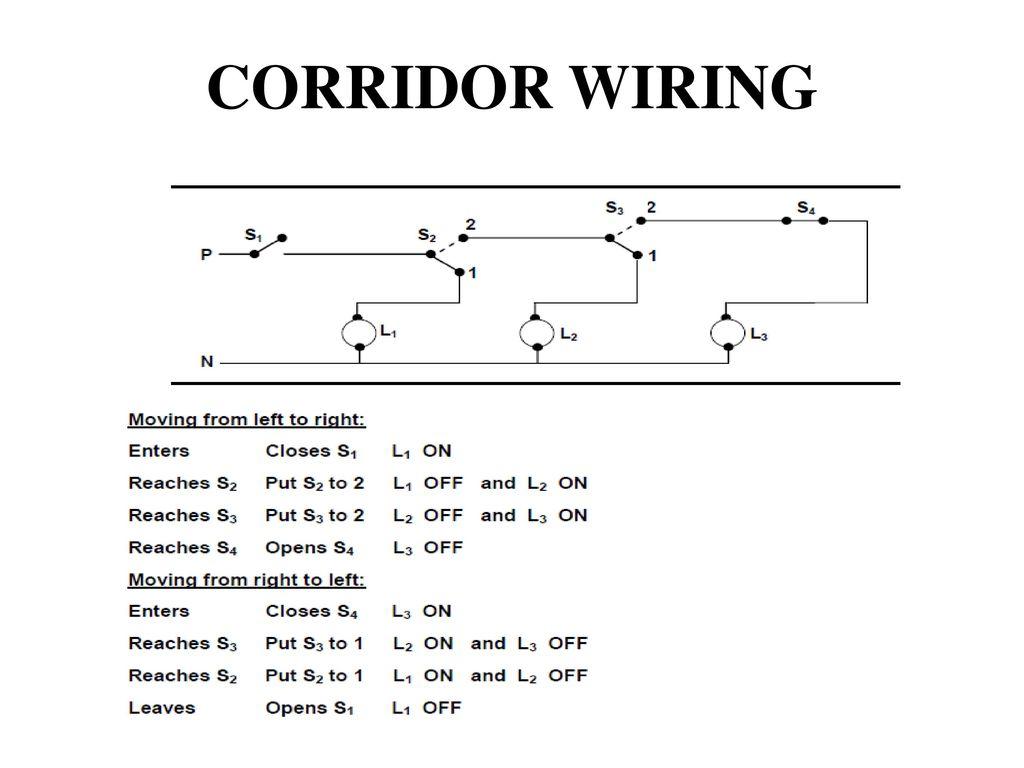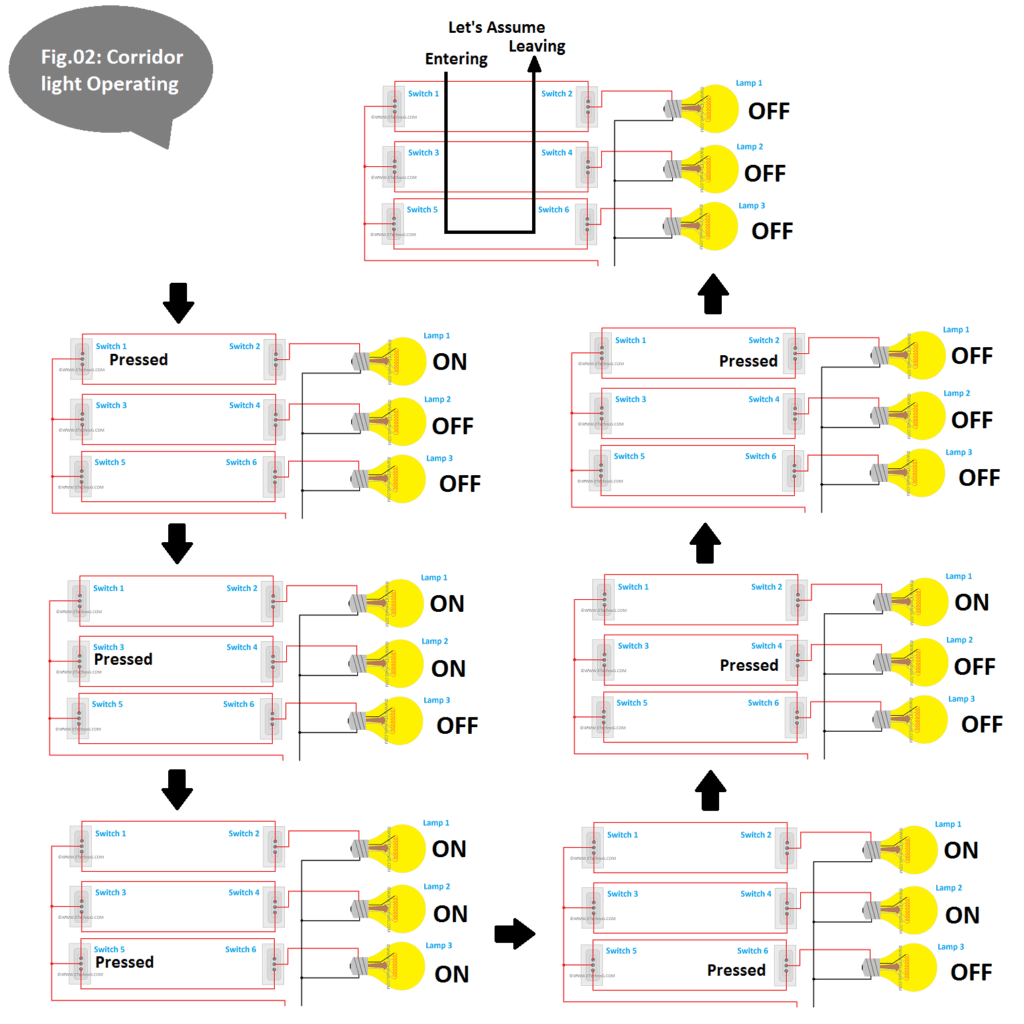Corridor Wiring: A Comprehensive Overview
Introduction
Corridor wiring is a specialized approach to electrical wiring installations primarily utilized in commercial and industrial buildings. This method of electrical wiring involves the strategic placement of electrical conduits, cables, and associated components within the structural elements of a building, specifically along corridors or hallways. Corridor wiring is chosen for its aesthetic, practical, and safety benefits, making it a preferred choice in various construction projects.
Principles of Corridor Wiring
Corridor wiring adheres to several fundamental principles:
- Concealment:-One of the central tenets of corridor wiring is the concealment of electrical wiring within the building’s structural elements. This concealed approach minimizes the visibility of wires, conduits, and electrical components, contributing to a cleaner and safer environment.
- Space Optimization:– Corridor wiring optimizes space within a building by integrating electrical systems into the walls, ceilings, or floors along corridors. This space-efficient method is particularly advantageous in environments where space utilization is crucial.
- Protection:– Concealing electrical wiring within walls, ceilings, or floors provides protection against various hazards, including physical damage, moisture, and environmental factors. This enhanced protection significantly extends the longevity and reliability of the electrical system.
- Compliance:– Many building codes and regulations mandate specific wiring methods to ensure safety and compliance. Corridor wiring aligns with these regulatory requirements, helping builders and property owners meet their legal obligations.
- Maintenance Accessibility:– Corridor wiring incorporates access panels or service points along corridors to facilitate convenient access for maintenance and system upgrades. This accessibility simplifies the task of servicing electrical components, reducing downtime and maintenance costs.

Components of Corridor Wiring
- Corridor wiring involves a range of components and materials that collectively form a reliable electrical system:
- Electrical Conduits: These protective tubes, typically made of metal or plastic, encase electrical wires, shielding them from external elements and physical damage. Conduits are routed within the structural elements along corridors.
- Electrical Wires and Cables: Insulated electrical wires and cables transmit electrical power and signals throughout the building. Corridor wiring accommodates these wires within conduits or raceways.
- Outlet Boxes: Outlet boxes serve as connection points for switches, receptacles, and other electrical devices. They are strategically positioned within the walls or ceilings along corridors.
- Switches and Receptacles: Switches control lighting and other electrical fixtures, while receptacles provide power outlets for various devices and appliances. These components are integrated into the corridor wiring system where needed.
- Access Panels: Access panels are installed along corridors to provide easy access to electrical components, such as junction boxes or circuit breakers. These panels facilitate maintenance and troubleshooting.

Advantages of Corridor Wiring
Corridor wiring offers several notable benefits
- Enhanced Aesthetics: Concealing wiring within structural elements results in a cleaner and more aesthetically pleasing interior environment, devoid of visible wires or conduits.
- Space Efficiency: By utilizing otherwise unused space within corridors, corridor wiring maximizes the usable area within a building, which can be especially beneficial in compact or crowded environments.
- Safety: Concealed wiring reduces the risk of accidental damage or tampering, enhancing the safety of occupants and the electrical system itself.
- Compliance: Corridor wiring aligns with building codes and regulations, ensuring that the electrical installation meets required safety standards.
- Ease of Maintenance: Access panels and service points simplify maintenance and repairs, minimizing disruptions and associated costs.

Applications of Corridor Wiring
- Commercial Buildings: Shopping malls, office complexes, and retail spaces benefit from corridor wiring due to its aesthetic appeal and adaptability to diverse electrical requirements.
- Industrial Facilities: Corridor wiring is suitable for manufacturing plants and industrial facilities where organized and protected wiring systems are essential.
- Healthcare Facilities: Hospitals and medical centers rely on corridor wiring to maintain a clean and safe environment while accommodating complex electrical needs.
- Educational Institutions: Schools and universities utilize corridor wiring to ensure a conducive learning environment while complying with safety regulations.
- Hospitality Industry: Hotels and resorts employ corridor wiring to provide a visually pleasing and functional electrical infrastructure for guests.
Conclusion
In summary, corridor wiring is a specialized approach to electrical wiring installations that prioritizes aesthetics, space efficiency, protection, compliance, and ease of maintenance. By concealing electrical components within the structural elements of a building along corridors or hallways, corridor wiring enhances the functionality, safety, and visual appeal of diverse types of buildings, making it a preferred choice in many construction projects.
Safety
Safety is a critical aspect of corridor wiring, as it involves the installation of electrical systems within the structural elements of a building, often in areas where people traverse, such as corridors and hallways. Proper safety measures are essential to prevent electrical hazards and ensure the well-being of building occupants. Here are some key safety considerations for corridor wiring:
- Compliance with Codes and Standards: Ensure that all corridor wiring installations adhere to local electrical codes, regulations, and safety standards. These codes are designed to establish safe practices and prevent accidents.
- Professional Installation: Corridor wiring should be carried out by qualified and licensed electricians or electrical contractors. These professionals are trained to safely install electrical systems and follow industry best practices.
- Conduit and Wiring Selection: Choose appropriate conduits, wiring, and insulation materials that meet safety requirements. Ensure that wiring is properly sized to handle the anticipated electrical load to prevent overheating and fires.
- Grounding and Bonding: Proper grounding and bonding of electrical systems are crucial for safety. Grounding ensures that excess electrical energy is safely directed to the ground, reducing the risk of electrical shock and fire.
- Circuit Protection: Install circuit breakers or fuses to protect against overcurrent conditions. These devices help prevent electrical fires by interrupting the flow of electricity when a circuit is overloaded.
- Access Panels: Access panels should be securely fastened and labeled to facilitate safe maintenance and troubleshooting. Electrical professionals should be trained in safe practices when accessing and working on corridor wiring systems.
- Regular Inspection and Maintenance: Schedule routine inspections of the corridor wiring system to identify and address any potential issues, such as loose connections or damaged wiring. Timely maintenance can prevent electrical problems before they become hazardous..
- Safety Signage: Use appropriate safety signage to indicate the location of electrical panels, emergency shutoffs, and other critical electrical components. This helps first responders and maintenance personnel locate these items quickly.
By prioritizing safety measures and following best practices, corridor wiring can provide a reliable and secure electrical system within a building, reducing the risk of electrical accidents and ensuring the safety of occupants and maintenance personnel.

